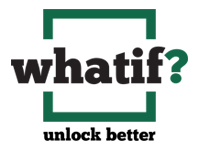
Consensus, Collaboration, and Coordination
Strong coordination is what separates great leaders from good leaders. They know disciplined execution is what pays off.
The three Cs to driving better outcomes
I recently had a great conversation with a client on the challenge the pandemic created for team dynamics and culture. We talked about how all the hard work that went into building a strong team bond can dissipate when everyone is connected virtually. We agreed that, despite best efforts, there is a difference between working virtually and physically. It’s tougher to collaborate and reach consensus when you can’t be in a room together.
As I reflected on our discussion, it occurred to me we often confuse collaboration with consensus, and collaboration gets a bad rap for it. We also don’t give as much consideration to coordination, which is critical for action. So, here are my thoughts on consensus, collaboration, and coordination and how they work in concert to drive better outcomes.
Consensus is required for problem recognition. Getting a team aligned on the issue is the first and most important step toward resolution. With consensus on a problem, there’s motivation to create a solution. If some team members disagree on the problem or its potential impact, more work is needed to understand and resolve differences or there’s risk of a false-start resolving it.
Collaboration is important for solution development. I like the maxim “collaborate to create” as a core operating principle. Consulting with stakeholders, getting diverse viewpoints, and working as a team to explore what if scenarios goes a long way in crafting elegant solutions. And, to be clear, collaboration is not consensus. We get stuck when we confuse the two. Good leaders don’t confuse getting consensus on the problem with collaborating on a solution. Knowing they are ultimately accountable for business outcomes, they assemble relevant data, consult with key stakeholders, and seek diverse perspectives as part of their decision-making process. They communicate that, while their decision may not meet every individual desire, it is a product of collaborative input. People support what they help create – that’s the power of effective collaboration.
Coordination is critical for execution. It takes as much, if not more, effort than getting consensus on the problem and collaborating on a co-created solution. It’s about being clear on roles, responsibilities, and good program management hygiene. When projects break down it’s usually a consequence of confusion on roles, responsibilities, issue escalation, and decision making. “Ambiguity is the enemy of execution” is another favorite operating principle. Strong coordination is what separates great leaders from good leaders. They know disciplined execution is what pays off. It may not be as sexy as rooting out a problem, or as energizing as rallying the team around a solution, but it gets the job done.
While we are still some time away from getting people together in a meeting room, we can run virtual sessions devoted to achieving consensus on the problem. We can run what-if? storming sessions to collaborate on the art of the possible. And we can define who does what, by when, and with whom to drive better outcomes. That’s what creates stakeholder value.
As always, I would appreciate your thoughts.


Leave a Reply